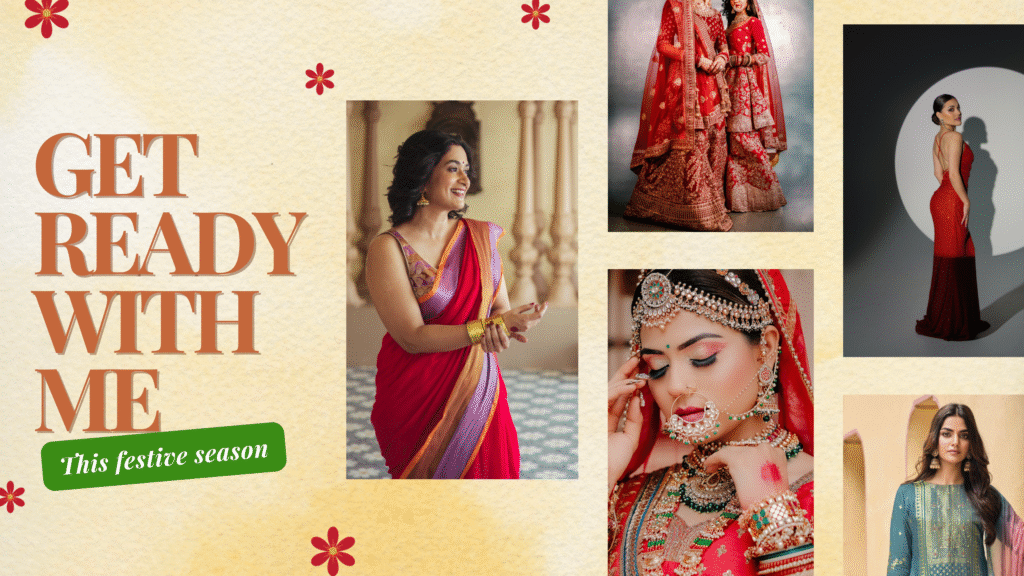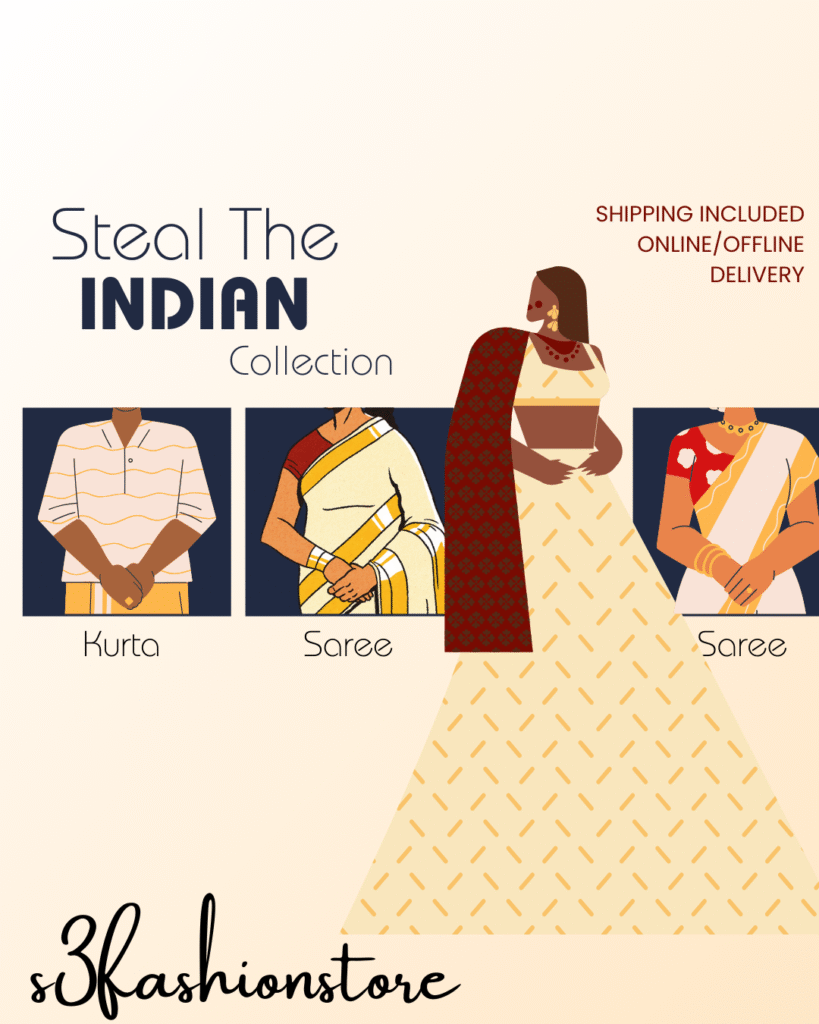
Clothing has always been more than just a necessity—it is a symbol of identity, tradition, culture, and self-expression. Around the world, different societies have developed unique clothing styles, and in a country like India, where tradition blends seamlessly with modernity, fashion becomes even more diverse and vibrant. Two of the most prominent styles we see today are Indian ethnic clothing and Western-style outfits. Both have their own charm, cultural significance, and practical value. In today’s globalized era, individuals often combine the two to create a wardrobe that balances tradition and contemporary trends.
This article explores Indian clothing in depth, Western fashion choices, and why it is important to invest in different designs for versatility, confidence, and long-term fashion value.
1. Indian Style Clothing
Indian clothing is rich in history, tradition, and symbolism. Every region of India has its own distinct dressing style, which reflects its culture, climate, and craftsmanship. Indian ethnic wear is not just about fabrics and stitches—it embodies heritage and artistry.
a. Saree
The saree is perhaps the most iconic Indian garment. It is a long piece of fabric, usually ranging from 5 to 9 yards, draped gracefully around the body in various styles. From the Banarasi silk sarees of Uttar Pradesh to the Kanjeevaram silk sarees of Tamil Nadu, each variety showcases regional craftsmanship.
- Occasions: Weddings, festivals, religious ceremonies, and formal gatherings.
- Features: Elegant draping, intricate embroidery, traditional motifs, handwoven textiles.
- Significance: The saree is timeless, suitable for all ages, and universally admired for its femininity.
b. Salwar Kameez
The salwar kameez is another widely worn Indian outfit. It includes a tunic (kameez), loose trousers (salwar), and a dupatta (scarf).
- Occasions: Daily wear, office wear, semi-formal events.
- Features: Comfort, ease of movement, simple to elaborate embroidery depending on the event.
- Regional Variants: Punjabi suits, Anarkali suits, Patiala salwar.
c. Lehenga Choli
The lehenga choli is a favorite for weddings and festive occasions. It consists of a flared skirt (lehenga), blouse (choli), and dupatta.
- Occasions: Bridal wear, festive gatherings, cultural celebrations.
- Features: Heavily embroidered fabrics, luxurious textiles like silk, velvet, and georgette.
- Significance: Symbolizes grandeur, tradition, and celebration.
d. Kurta Pajama and Sherwani (Men’s Wear)
Indian men traditionally wear kurta pajama, which is a long tunic paired with trousers, often accessorized with a Nehru jacket. For weddings and grand occasions, men often wear sherwanis, which are heavily embroidered long coats.
- Occasions: Weddings, religious functions, festivals.
- Features: Regal, stylish, yet rooted in tradition.
e. Regional Clothing
- Kerala: White and gold kasavu sarees and mundu.
- Rajasthan: Ghagra choli with mirror work and turbans.
- Kashmir: Pheran for both men and women.
Indian clothing represents a fusion of heritage, craftsmanship, and elegance. It connects people to their roots while also being adaptable to modern fashion trends.
2. Western Style Outfits
Western fashion has become a dominant influence across the globe, including India. The modern wardrobe often includes jeans, shirts, dresses, and business suits. Western clothing is known for its functionality, modern appeal, and global recognition.
a. Casual Wear
Western casual clothing is perhaps the most universally worn style today.
- Jeans and T-shirts: Comfortable, stylish, and suitable for everyday use.
- Dresses: Sundresses, maxi dresses, and bodycon dresses are popular among women.
- Casual Shirts: Polo shirts, button-downs, and tank tops provide comfort with versatility.
b. Formal Wear
Western formal wear emphasizes neat tailoring and elegance.
- Men: Business suits, ties, blazers, and tuxedos.
- Women: Pencil skirts, blazers, trousers, and formal dresses.
- Occasions: Corporate meetings, office wear, international conferences, formal dinners.
c. Evening Wear
Western evening wear is elegant and glamorous.
- Women: Gowns, cocktail dresses, and little black dresses.
- Men: Suits and tuxedos with bow ties.
- Features: Sleek fabrics, minimal embroidery, and contemporary silhouettes.
d. Fusion and Streetwear
Street fashion and fusion outfits combine comfort with creativity.
- Women: Crop tops with jeans, jumpsuits, hoodies.
- Men: Joggers, hoodies, graphic tees, sneakers.
- Significance: Reflects individuality, creativity, and modern lifestyle.
Western clothing is global, adaptable, and modern, making it an essential part of any wardrobe.
3. Comparing Indian and Western Clothing
| Aspect | Indian Clothing | Western Clothing |
|---|---|---|
| Cultural Significance | Deeply rooted in tradition, regional identity | Global, modern, lifestyle-driven |
| Occasions | Weddings, festivals, religious events | Offices, casual outings, global events |
| Designs | Embroidery, handwoven fabrics, heavy detailing | Minimalistic, sleek cuts, contemporary |
| Comfort | Often elaborate, sometimes heavy | Lightweight, easy to wear daily |
| Symbolism | Heritage, rituals, customs | Modernity, professionalism, individuality |
Both Indian and Western outfits have their unique importance, and blending them offers the best of both worlds.
4. Importance of Purchasing Different Designs
In a world where appearances create strong impressions, investing in different designs of clothing is essential. Here are the reasons why:
a. Versatility in Wardrobe
Owning different designs ensures you are ready for any occasion.
- Sarees and lehengas for weddings.
- Salwar kameez and kurtas for festivals.
- Western formal wear for office meetings.
- Casual jeans and T-shirts for daily life.
A versatile wardrobe means you can dress appropriately, no matter the event.
b. Self-Expression
Fashion is a language without words. Each design expresses individuality, mood, and creativity.
- Bold prints show confidence.
- Pastel tones display calmness and elegance.
- Traditional attire reflects cultural pride.
c. Comfort and Practicality
Not every design suits every occasion. Owning a variety ensures both comfort and practicality.
- Cotton kurtas or T-shirts for summer.
- Warm pherans or coats for winter.
- Flowing gowns for evening parties.
d. Cultural Representation
By purchasing both Indian and Western designs, individuals celebrate diversity. Wearing traditional attire during festivals keeps heritage alive, while Western clothing represents global adaptability.
e. Fashion Trends and Individual Growth
Fashion constantly evolves. New designs keep wardrobes fresh and updated, preventing monotony. Purchasing different designs allows experimentation with trends, blending old with new.
f. Confidence and Self-Esteem
When you wear the right outfit for the right occasion, it boosts confidence. Owning diverse designs ensures you always have a perfect fit for your personality and event.
g. Symbol of Status and Professionalism
A well-curated wardrobe with diverse designs signals good taste, professionalism, and social awareness. In the corporate world, for example, formal Western attire is often seen as a mark of seriousness and credibility.
5. The Fusion of Indian and Western Fashion
One of the most exciting developments is the fusion of both styles. Designers and individuals are now blending Indian and Western aesthetics to create new trends:
- Indo-Western Dresses: Gowns with Indian embroidery.
- Kurta with Jeans: Traditional top paired with modern bottoms.
- Saree with Belt: Contemporary twist to a timeless attire.
- Blazer with Lehenga: Bold mix of Western tailoring and Indian celebration wear.
Fusion fashion celebrates the best of both worlds while giving individuals more options to experiment with designs.
6. Conclusion
Clothing, whether Indian or Western, plays a vital role in shaping identity, representing culture, and providing comfort. Indian clothing brings with it richness, tradition, and timeless beauty, while Western clothing provides practicality, global recognition, and sleek modernity. Both are important in today’s interconnected society.
Purchasing different designs is not about extravagance—it is about versatility, self-expression, confidence, and respect for cultural diversity. A balanced wardrobe filled with Indian ethnic wear, Western formal and casual outfits, and fusion attire ensures that individuals are prepared for every occasion, whether it is a traditional wedding, a corporate meeting, or a casual weekend outing.
In essence, fashion is freedom—freedom to express, adapt, celebrate, and belong. A wardrobe rich in different designs of Indian and Western clothing ensures that you never just wear clothes—you tell a story, celebrate a culture, and leave an impression that lasts.

